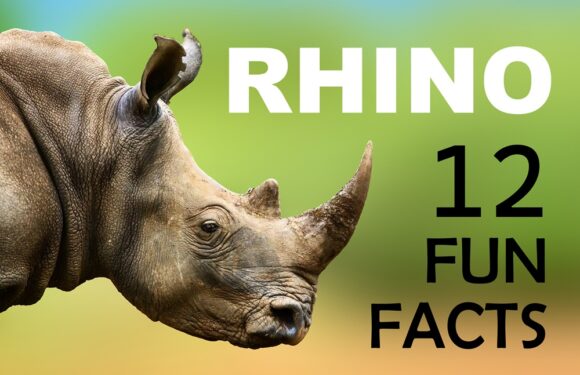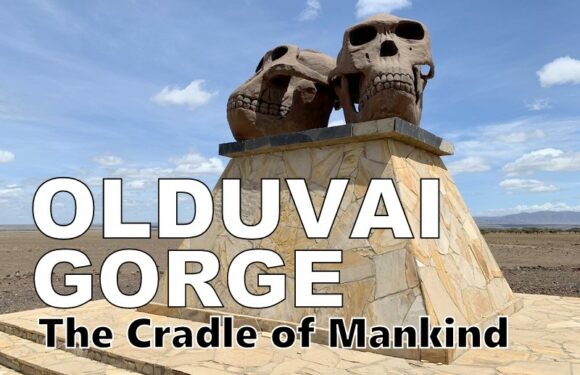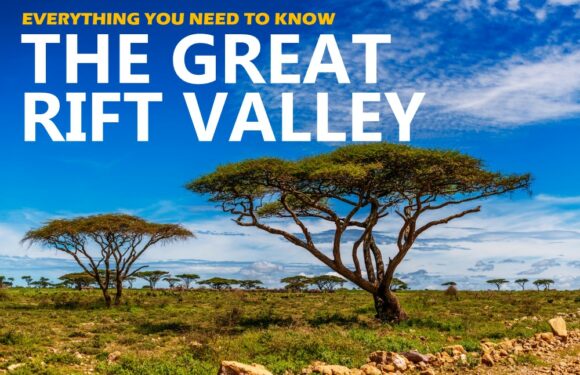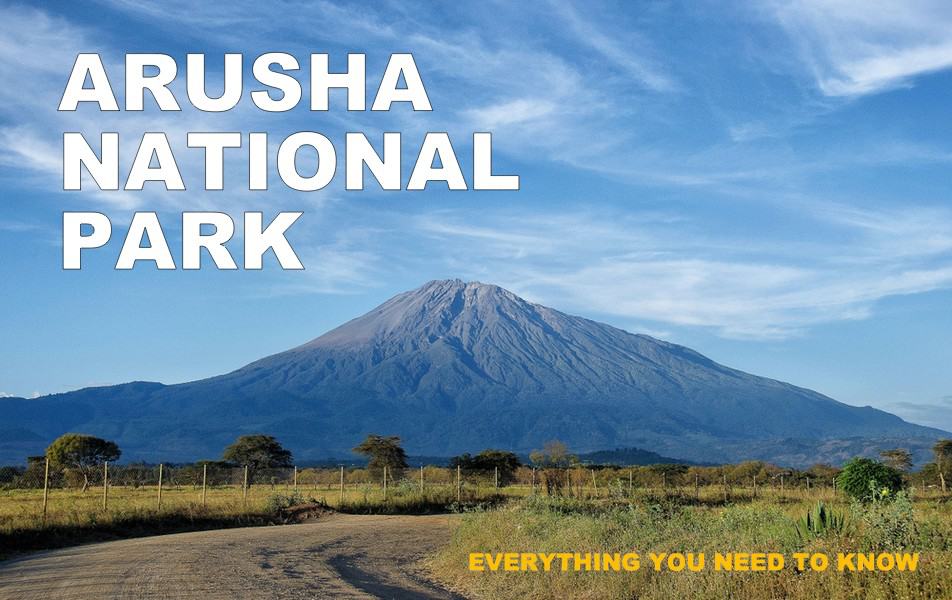
Arusha National Park is a small, but very accessible wildlife park in Northern Tanzania. The park serves as a perfect introduction to Tanzania’s wildlife and natural beauty. We visit Arusha National Park on our one-day safaris, though it can be easily added as the first stop to longer itineraries.
Where is Arusha National Park Located?
Arusha National Park is located near the town of Arusha, Tanzania.
Arusha town is a central hub for safaris in northern Tanzania. The park is conveniently situated just a short drive from Kilimanjaro International Airport, making it an easy visit for tourists.
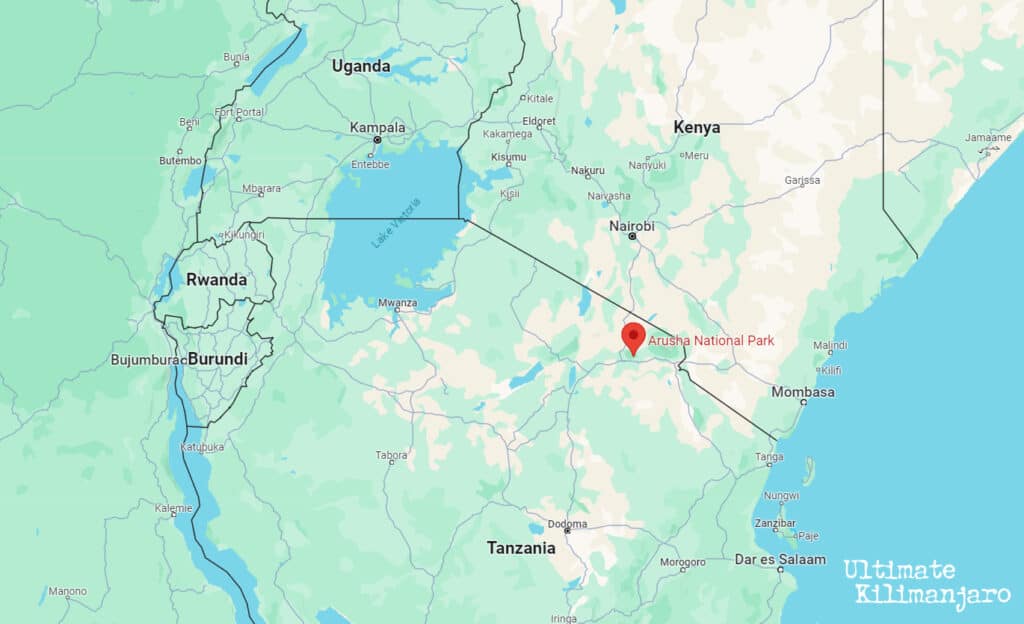
How Big is Arusha National Park?
Arusha National Park is quite compact, at just 53 square miles (137 square kilometres). The park is slightly larger than San Francisco, California, and about the same size as Copenhagen, Denmark.
What Makes Arusha National Park Unique?
Arusha National Park is often overlooked in Tanzania’s safari itineraries, but it holds a charm that is both unique and compelling.
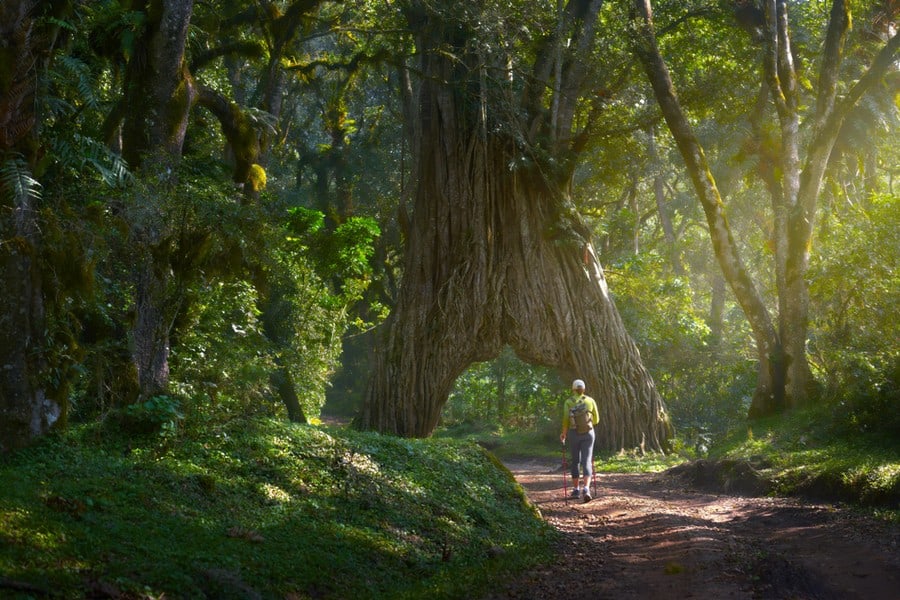
First, the park is dominated by Mount Meru, the second highest peak in Tanzania behind Mount Kilimanjaro. Standing at 14,980 feet (4,562 kilometers) tall, Meru is referred to Kilimanjaro’s little brother, but the dormant volcano is a worthy climb in its own right.
Unlike the Serengeti or Ngorongoro Crater, Arusha National Park has a variety of habitats in a compact area. The park’s diversity extends to Ngurdoto Crater and the tranquil beauty of the Momella Lakes.
What are the Districts of Arusha National Park?
Arusha National Park has three distinct districts.
Mount Meru District
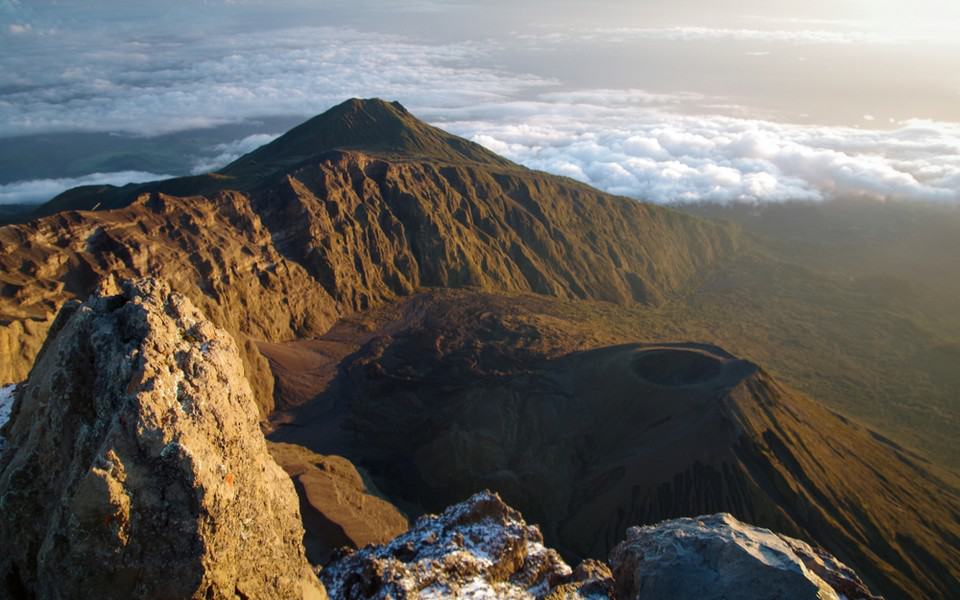
Mount Meru is part of the park’s western district. The slopes of Mount Meru are covered in dense forest and are home to wildlife including colobus monkeys, leopards, and a variety of bird species. The ascent of Mount Meru leads trekkers through a range of ecosystems, from the rainforest to alpine desert, culminating in breathtaking views from the summit.
Ngurdoto Crater District
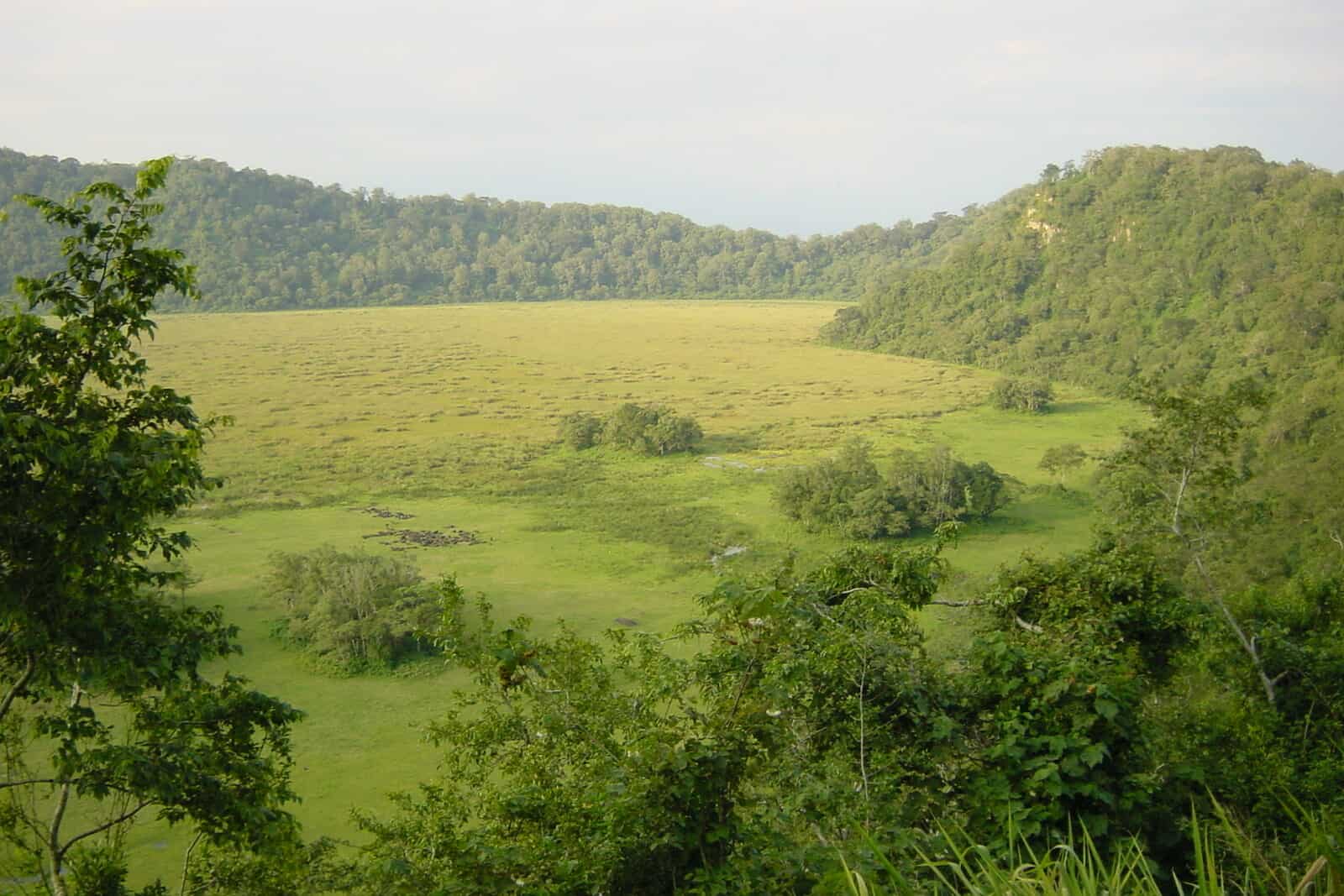
The Ngurdoto Crater, often referred to as a miniature Ngorongoro, is a volcanic caldera located in the eastern part of Arusha National Park. This district is characterized by its rainforest that blankets the crater’s steep walls and the swamp-filled crater floor. This area is a sanctuary for wildlife, including troops of baboons, herds of buffalo, and various antelope species.
Momella Lakes District
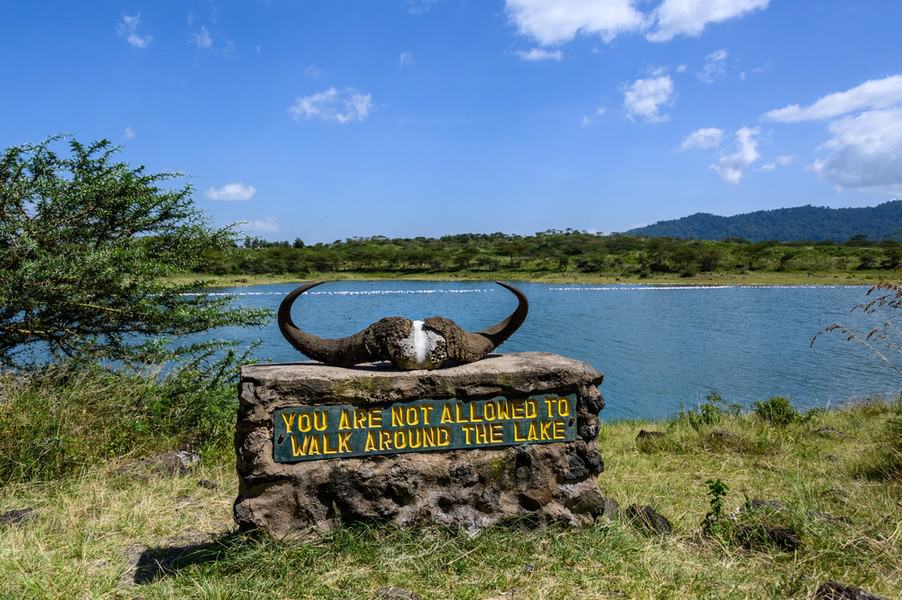
The Momella Lakes are a series of seven shallow alkaline lakes located in the northeastern sector of the park. These lakes attract a variety of bird species, including flamingos, pelicans, and waterfowl. The varying hues of the lakes, from deep blues to vibrant greens, add to the scenic beauty of the area. The district is also known for its gentle wildlife safaris, where visitors can enjoy game drives or canoe safaris.
How was Arusha National Park Formed?
The formation of Mount Meru is central to the creation of the geography of Arusha National Park. This mountain, which last erupted over a century ago, played a big role in shaping the area’s terrain. The volcanic activity produced the fertile soils that supported the habitats of the park. In addition to volcanic activity, the park’s higher altitudes have been shaped by glacial action. Past glaciation has carved out valleys and ridges, contributing to the park’s dramatic and rugged terrain.
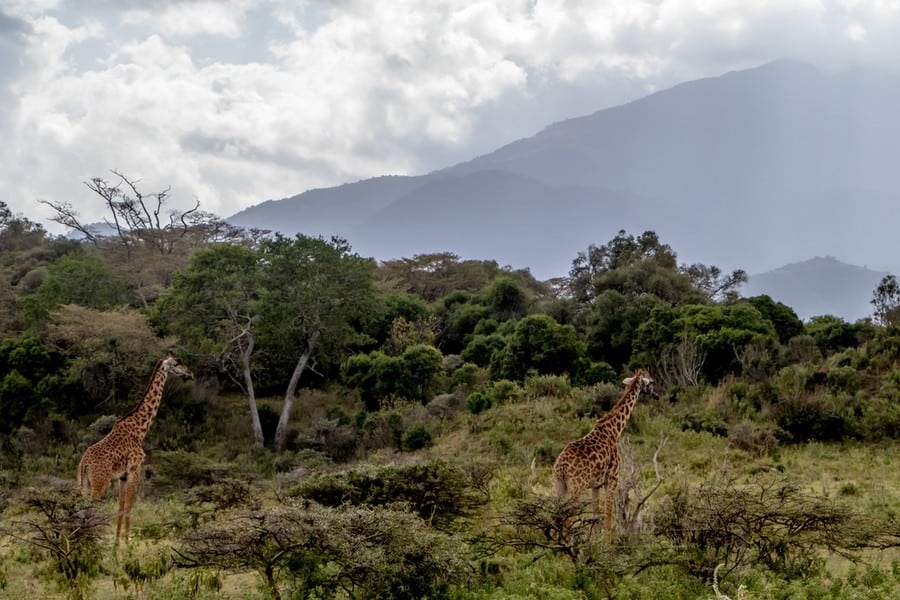
The East African Rift System is a significant, active continental rift zone. This geological feature has shaped much of East Africa’s landscape. The rifting process led to the creation of various landforms, including Ngurdoto Crater. This process has resulted in a mix of highland and lowland areas.
Over time, the combination of volcanic soil, altitude variation, and climatic conditions have allowed for the development of diverse ecosystems within the park.
Arusha National Park was declared a national park in 1960.
What Wildlife can be Seen in Arusha National Park?
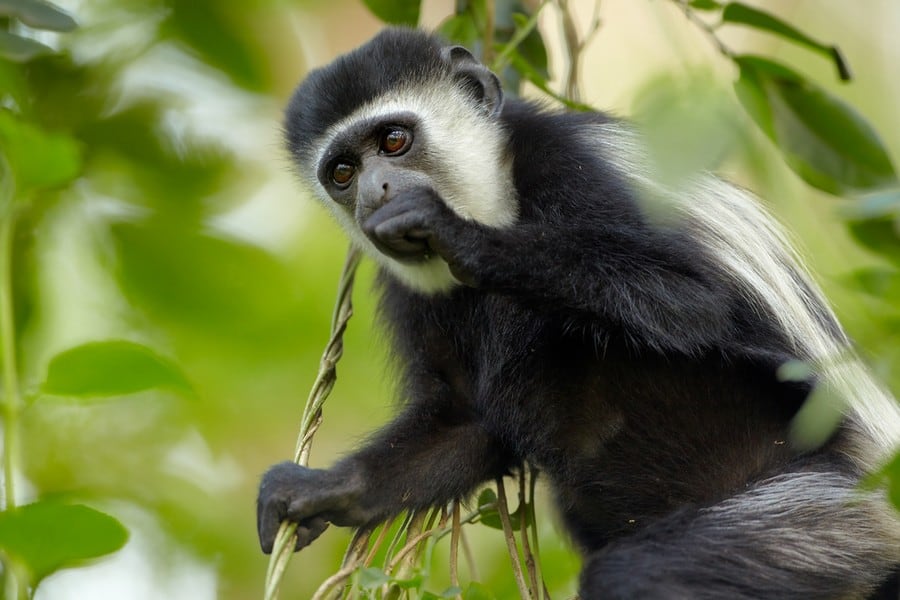
While the park may not host the larger savannah wildlife typical of the Serengeti (there are no lions here), it compensates with a variety of other species. Here’s a list of some of the animals you can encounter in the park:
- Black-and-White Colobus Monkeys: Known for their striking black and white fur and long, flowing tails.
- Blue Monkeys: A common primate species in the park’s forests.
- Giraffes: Often seen gracefully moving through the park’s landscapes.
- Zebras: Striped grazers commonly found in the open areas.
- Warthogs: Known for their distinctive tusks and playful behavior.
- Buffaloes: These large herbivores are often spotted in the park.
- Waterbucks: Typically found near the park’s water sources.
- Bushbucks: Shy and elusive, these antelopes inhabit the park’s thicker vegetation.
- Dik-diks: Small antelopes known for their delicate features.
- Flamingos: Particularly around the Momella Lakes, adding a splash of color to the scenery.
- Various Waterfowl: Including ducks and geese, frequenting the lakes.
- Leopards: Though elusive, they are occasionally sighted in the park.
- Hyenas: Mainly spotted during night game drives.
- A variety of Bird Species: The park is a haven for birdwatchers with numerous species, including raptors and forest birds.
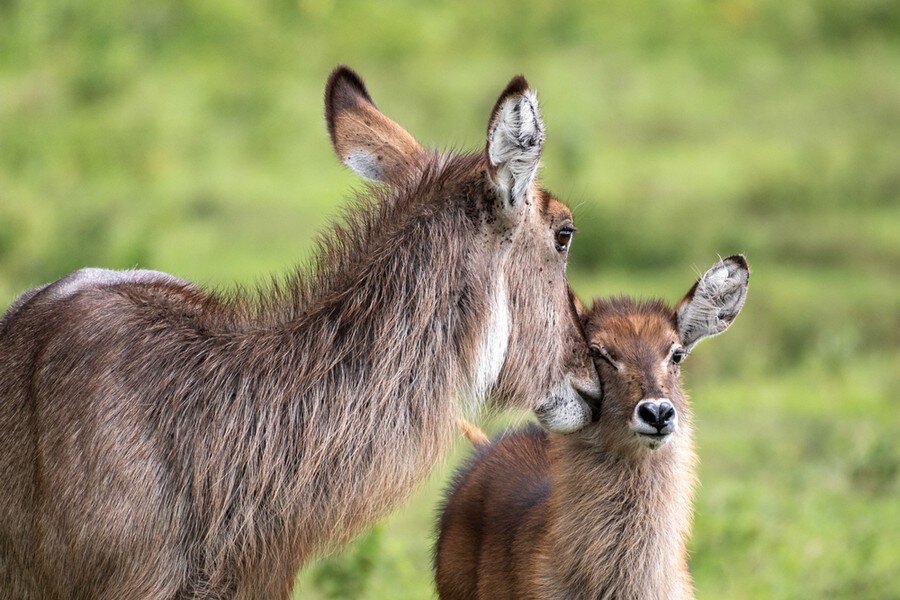
What is the Weather in Arusha National Park?
Arusha National Park experiences a climate that is marked by distinct wet and dry seasons.
Dry Season (June to October):
- Climate: This season is characterized by dry, sunny days with minimal rainfall, offering ideal conditions for wildlife viewing and outdoor activities.
- Temperatures: Daytime temperatures average around 20°C (68°F), but can occasionally reach up to 25°C (77°F). The higher altitude areas, particularly near Mount Meru, tend to be cooler. Nighttime temperatures can drop to around 10°C (50°F), sometimes lower in the higher altitude zones.
- Wildlife: Animals tend to congregate around permanent water sources, making them easier to spot. The clear skies and thinner vegetation also improve visibility.
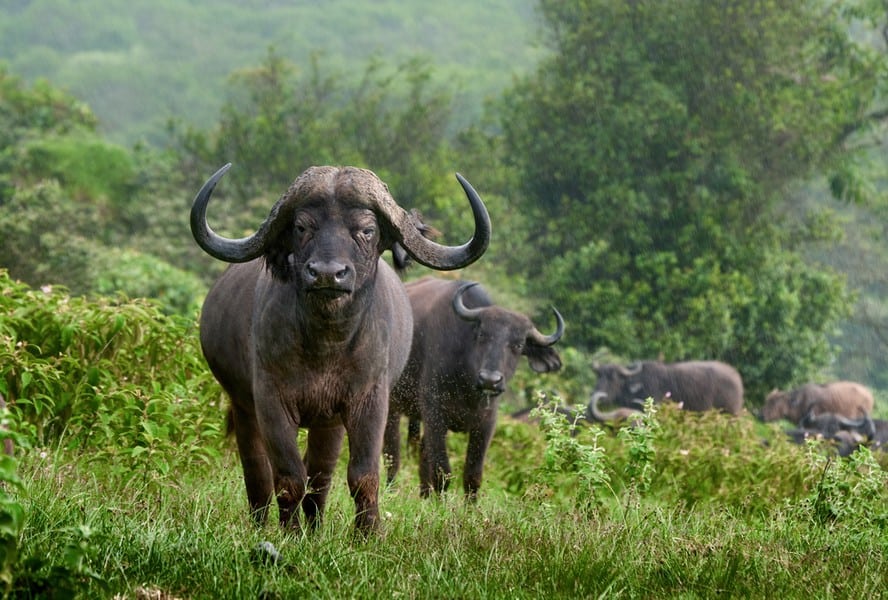
Wet Season (November to May):
- Climate: The wet season brings the ‘short rains’ from November to December and the ‘long rains’ from March to May. Rainfall usually occurs in the form of brief but heavy showers, often in the afternoon or evening.
- Temperatures: Daytime temperatures during the wet season are cooler, averaging around 18°C to 22°C (64°F to 72°F). The cloud cover and rainfall help moderate the temperatures. Nighttime temperatures are slightly warmer than the dry season, hovering around 12°C to 15°C (54°F to 59°F).
- Wildlife: The park transforms into a lush, green landscape, attracting a variety of birds, including migratory species. While the denser vegetation can make wildlife viewing more challenging, the scenery is vibrant and beautiful.
When is the Best Time to Visit Arusha National Park?
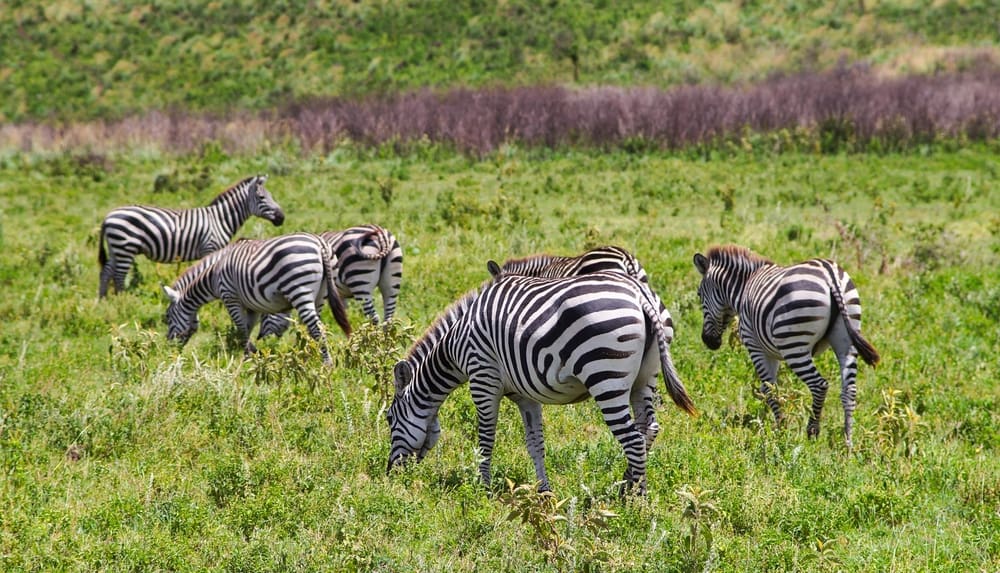
Arusha National Park can be visited year-round. For those who wish to climb Mount Meru, the best times are from June to February. For wildlife viewing, the peak season is from June to October.





















































